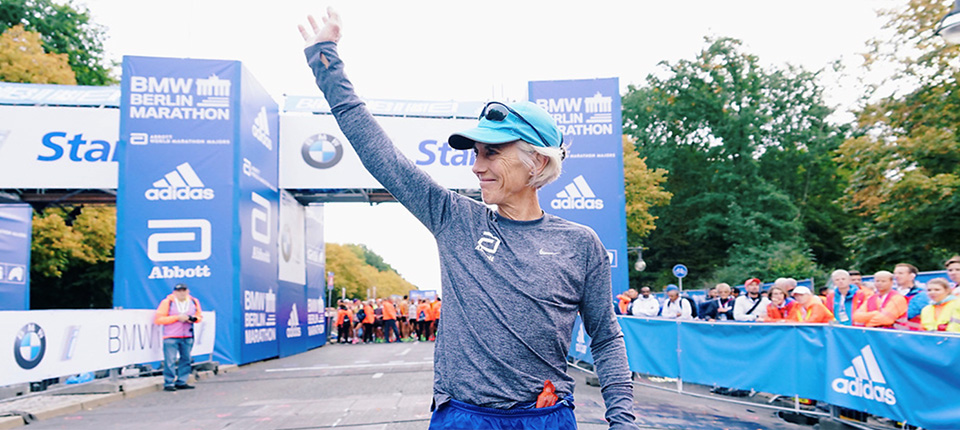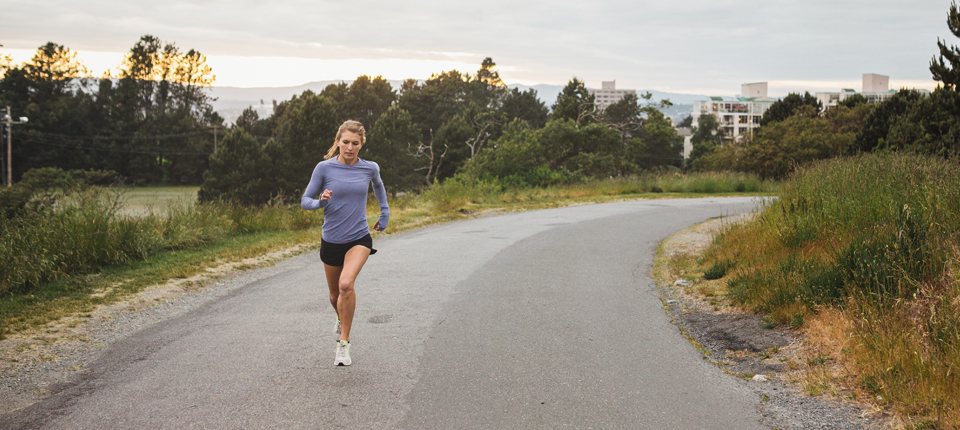1. Stay positive
The 1984 Olympic gold medalist admits this was hard for her when her latest training program was interrupted first, by the COVID-19 pandemic and then, when she underwent knee surgery.
“If you look at things in a fresh light, it enables you to find new energy, find new goals and perhaps find a new training partner who’s in a similar situation,” Samuelson said.
She has mastered maintaining a positive attitude and open mindset to trying new and different training methods. “I’m going to give it every effort and try every angle by rerouting and rebooting the details of my training before I say ‘I can’t.’”
2. Build new habits
With a mindful reset, Samuelson’s post-operative journey meant setting more intermediate goals and modifying her daily routine. Like drinking a full glass of water before her cup of morning coffee. Or, trying something she had never done before — cold water swimming.
Despite freezing temperatures, the lifelong Maine resident kept up with her new routine through winter and spring — even having to break through ice on some swims.
“When I get out, I have this feeling of being alive,” Samuelson said. “The zinging of your skin. Like when you hydrate, you feel better and stronger.”
3. Strength training
Samuelson encourages people sidelined from running to spend more time stretching and strengthening. She has incorporated a lot of cycling because she can get her heart pumping without putting much stress on her joints.
She noted that if you rush back into your workouts you risk reinjuring yourself, both the original injury (if it’s not yet healed) and a new injury because you’re running differently to compensate for the initial problem. Samuelson recommends people use these times to develop more fully as a runner or an athlete.
4. Let symptoms be your guide
Before returning to exercise after illness, Lonnie Lowery, a senior research scientist with Abbott’s nutrition science team and an expert in physiology, considers what he calls a “neck check.”
If you have mild symptoms above the neck, like with a cold, then you can probably return to your usual exercise if you feel up to it, according to Lowery. But if symptoms are below the neck — chest congestion, fever, body aches — Lowery suggests letting those symptoms pass before resuming your workout routine.
5. Be patient
The most effective way to return to running after an illness or injury is to do so gradually, said Samuelson. And that takes patience.
“It’s just like starting a marathon,” she said. “You have to be patient in the beginning of the race. You can’t go all out right way or you’ll run out of gas.”
And just like in running, once your body and mind are ready, give it all you’ve got.
“I use the first half of a marathon to find my pace and figure out how I’m feeling,” Samuelson said. “Then at halfway I come from the depths and race as fast as I can. I want to pass people. I try not to let anyone pass me.”
Abbott is the title sponsor of the Abbott World Marathon Majors, a series of six of the largest and most renowned marathons in the world: Tokyo Marathon, Boston Marathon, TCS London Marathon, BMW BERLIN-MARATHON, Bank of America Chicago Marathon and TCS New York City Marathon. Click here to learn more.






FOLLOW ABBOTT